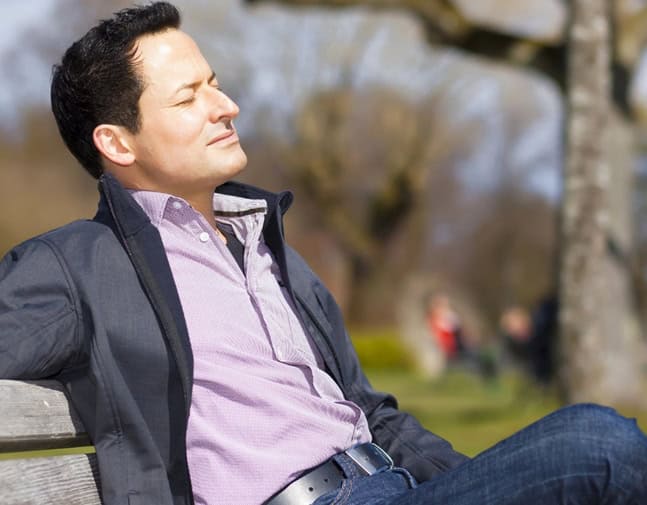Blog
Blog
How Parks Calm the Mind: Study Reveals the Influence of Sounds and Sights in Parks on Visitors

In the dynamic world of modern society, urban parks offer a vital escape from the stress of city life, providing individuals with the retreat they need from the chaotic environment of large metropolitan centres. However, what makes parks truly restorative?
In a groundbreaking 2024 study published in the scientific journal Nature, researchers Wenbo Li and Yang Liu explored the intricate relationship between park environments and visitors’ emotional well-being. The study delves into how visual elements and auditory landscapes in parks influence individuals’ landscape preferences, emotional states, and perceptions of restoration. Understanding these dynamics can contribute to the creation of better-designed parks, which can be particularly beneficial for those suffering from mild hearing loss looking for a suitable environment for auditory enrichment.
Study Insights
The researchers surveyed 861 visitors across five distinct parks in China, employing a combination of questionnaires and observational techniques. By analyzing landscape features such as vegetation density, water bodies, and soundscapes, they aimed to uncover how these elements can influence:
- Landscape preferences (LP): how much visitors like what they see
- Emotional states (ES): How people felt in such environments
- Perceived restorativeness (PRS): How restorative visitors feel the environment is.
Impact of Natural vs. Mechanical Elements
The study confirmed that natural elements, including trees, flowing water and birdsong, have a positive effect on people’s preference, mood, and perceived restoration. These features foster a sense of tranquillity and connection to nature, enhancing the overall experience for visitors. Conversely, mechanical elements, such as artificial structures and urban noise, diminished the potential for restoration.
This contrast emphasizes the importance of incorporating natural features into park design to promote psychological well-being, suggesting that environments rich in nature can significantly improve visitor satisfaction and mental health outcomes.
The Different Pathways to Restoration
The study reveals that restoration can be achieved through two pathways:
- Direct pathways indicate that natural sights and sounds significantly enhance landscape preference, emotional well-being, and restoration. These elements create an immediate impact on how individuals perceive their surroundings.
- Indirectly pathways natural features also boost mood and overall preference, contributing to a sense of perceived restoration. This highlights the multifaceted role of nature in our lives, suggesting that exposure to natural environments is vital for mental rejuvenation and emotional balance.
The Role of Soundscape Moderators
One of the most interesting highlights of the study is the moderating effect that specific sounds have over certain visuals, which shows how strong the influence of sound can be in affecting people’s mood and psychological state.
- Birdsong: The research showed that bird singing amplifies the restorative effects of ground vegetation and water sights.
- Flowing water sounds: The study reveals that water sounds can greatly enhance emotional responses in tree- and water-rich environments.
- Conversational noise: Mixed influences. The context and environment in which individuals would hear conversational noise can affect whether these sounds enhance or reduce restorativeness.
- Traffic and construction noise: The study found that such sounds can severely reduce restorativeness when paired with sights of an urban environment.
Why This Matters for Hearing Care
Understanding the relationship between natural environments and emotional well-being is particularly significant for hearing care. Exposure to natural sounds, such as birdsong and flowing water, serves as auditory enrichment for individuals experiencing mild hearing loss. Moreover, these natural auditory stimuli can bring therapeutic benefits, enhancing mood, reducing stress, and promoting a sense of calm. Furthermore, from a hearing professional’s point of view, understanding soundscapes helps specialists guide clients toward better hearing environments, contributing to their auditory and psychological health.
Hearing Care in Calgary
At Soundwave Hearing Care, we understand that hearing is more than just sound. The auditory world shapes our emotions, connections, and memories. That’s why we are dedicated to providing not just hearing solutions, but a pathway to rediscovering the joy of sound and helping you reconnect with the experiences life has to offer. If you or someone you know is experiencing hearing loss, we are here to help. Counting on an experienced team of professionals, we can conduct thorough hearing tests and auditory assessments to provide precise diagnoses and effective treatments tailored to your needs. Call us today to schedule a consultation. We have clinics in Calgary, Lethbridge, Grande Prairie, and High River.
All the blogs are reviewed and edited by our clinic's lead audiologist, Dr. Anne Wooliams. Dr. Woolliams is an experienced audiologist specialized in pediatric audiology, auditory processing, and tinnitus/sound sensitivity therapy. She is dedicated to providing top-notch hearing care and helping her clients improve their language and communication abilities. Dr. Woolliams' expertise in literature and linguistics, combined with her passion for helping people improve their language and communication, make her an incredibly valuable asset in the field of audiology. Learn more about Dr. Woolliams.
